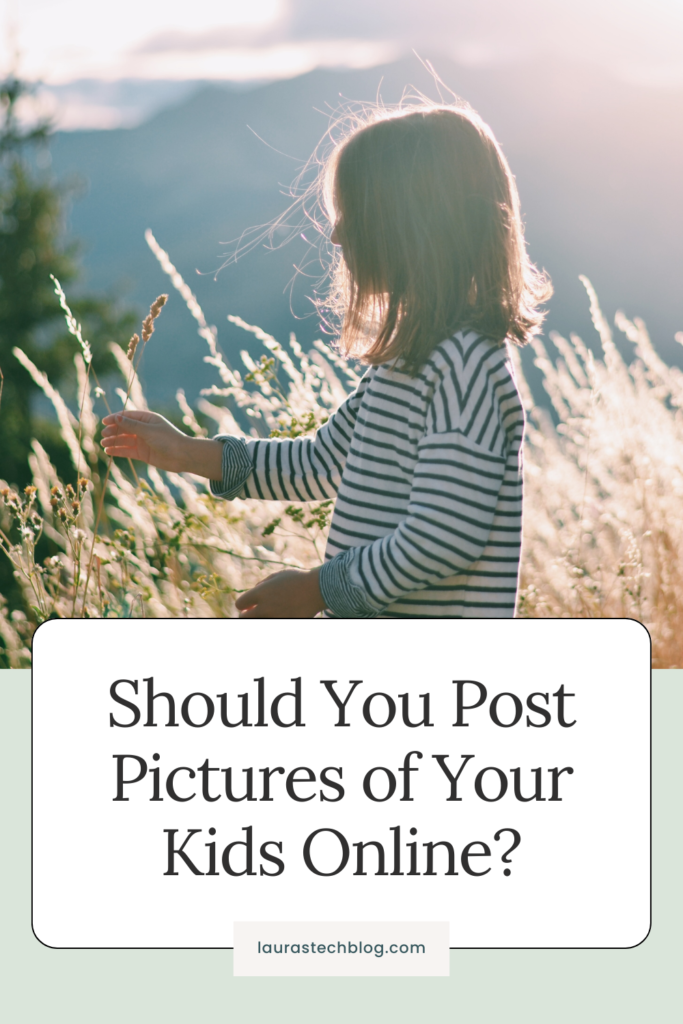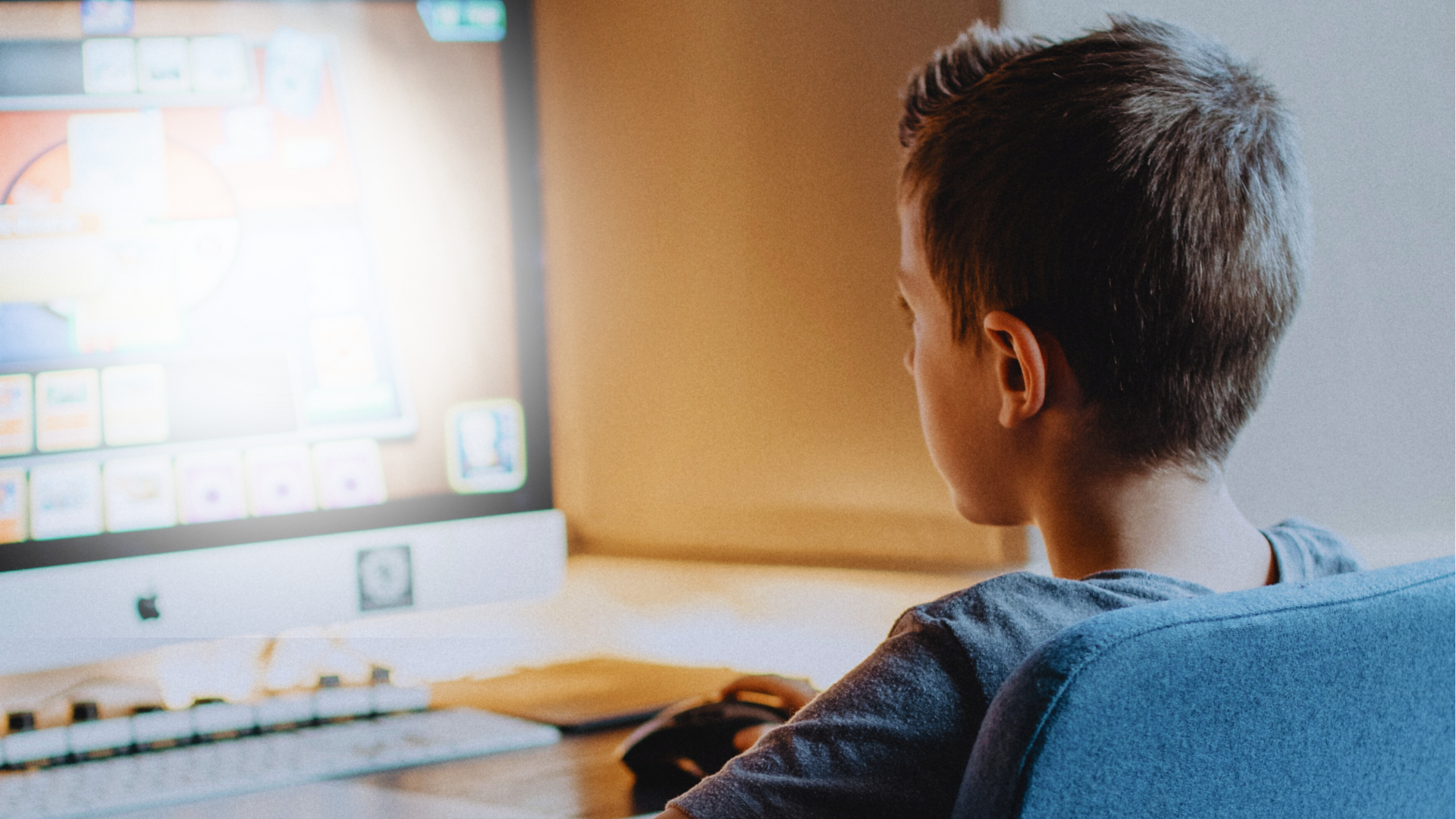Have you ever snapped a cute picture of your little one and immediately shared it online without a second thought? Yeah, me too, countless times. But these days, I’ve started to pause. What’s causing my hesitation? A little thing called “sharenting”.
You’ve probably heard the buzzword “sharenting” in podcasts or articles. So, what’s the big deal? In a nutshell, sharenting is when we, the parents, splash pics, stories, and other kid-related tidbits across the internet. Innocent sharing or a future problem? That’s what we’re diving into today.
This post isn’t a scare tactic, nor is it a judgment zone. It’s a balanced look at the ups and downs of putting our kids in the digital spotlight. We’ll unpack the good, the bad, and the fuzzy areas in between, so we can all feel more confident about that next “share”—or not.

*This post contains two affiliate links*
What We’ll Explore in This Post:
- Why We Need to Talk About Sharenting
- The Good Stuff: Sharenting Pros
- Immediate Concerns: Sharenting Cons
- What Other Parents Are Doing | Jenna Kutcher’s Perspective
- Alternatives to Posting Publicly
- Mindful Posting Checklist for Parents
- Final Thoughts and Takeaways on Sharenting
Why We Need to Talk About Sharenting
It’s noteworthy that more and more parents are choosing to pump the brakes on posting their kids’ photos online. Although the reasons are diverse, the conversation among experts consistently comes back to two points: the question of consent and the lasting impact of digital footprints.
Consent and Kids
Even if our kids are old enough to say “yes” or “no” to a photo, do they really get what it means long-term? Remember, it’s not just a momentary decision. When we hit “share,” we’re making a lasting choice for them, one they might not fully understand yet.
The Permanence of Digital Footprints
“We’re making these little footprints for them before they have the chance to make their own,” says Stacey Steinberg, author of Growing Up Shared. This quote hits especially hard when you consider a report showing that children have over 1300 pictures of them posted online before they turn 13. It’s not just a snapshot; it’s their budding digital legacy. And why should that matter? Well, fast-forward to future job applications, social situations, and other life events. Those old photos could resurface in ways we can’t even predict right now.
The Good Stuff: Sharenting Pros
Lots of content around “sharenting” seems to focus only on the risks and safety concerns, leaving out the good reasons many of us share photos of our kids online. These aren’t just trivial benefits; they’re real, solid pros that make the habit hard to break without a very compelling reason to stop. So let’s look at what makes pressing that “post” button so rewarding.
Keeping Family and Friends in the Loop
Sharing pictures of your kids online is a super convenient way to keep family and friends updated. Especially those far-away relatives and friends who might not get to see your little ones as often as they’d like.
Creating a Digital Memory Album
Sure, our phones are brimming with photos, but having them online turns your social media into a living memory album. First steps, birthdays, messy spaghetti faces—you get to look back and remember all these moments without the hassle of traditional photo albums or digital folders. Plus, let’s not forget those “On This Day” memory features that give you a dose of nostalgia when you least expect it.
Immediate Concerns: Sharenting Cons
Sharing snaps of your little ones has its upsides, but as with most things in life, there are some pitfalls worth thinking about.
Privacy Vulnerabilities
First off, privacy—or the lack thereof. Once a photo is out there, it’s difficult to control who sees it. Beyond your friends and family, there’s the chance it could be seen by people you don’t even know—hello, friend-of-a-friend’s cousin’s roommate. And let’s not forget that certain platforms might have the right to use your photos in ways you haven’t considered. To add fuel to the fire, many people haven’t updated or even checked their social media privacy settings in over a year. Yikes!
Data Harvesting
Another angle on this is data harvesting. Companies collect tons of data on users to build profiles for marketing, and yes, this includes your kids. Those cute birthday pictures could someday be part of a data set used to sell products.
Online Safety Risks
The safety concerns are real. While the term “stranger danger” isn’t everyone’s favorite, the concept still exists. Did you know some photos contain metadata that could reveal your location? Even if you’re careful, that metadata might give away your kid’s school or your home address.
Emotional and Psychological Impact
Lastly, consider the emotional aspect. As your kids grow up, they may not appreciate having their entire childhood documented for public viewing. This could be a point of contention as they mature and begin to seek their own autonomy. As Dr. Justin Patchin, Co-Director of the Cyberbullying Research Center, puts it, “Children develop a digital identity in a setting they can’t control and isn’t even designed for them.”
What Other Parents Are Doing | Jenna Kutcher’s Perspective
If you’re anything like me, some of your greatest “a-ha” moments come courtesy of podcasts while you’re multitasking or savoring a good cup of coffee. One episode that really had me pause was by none other than Jenna Kutcher. A social media pro who’s been documenting her life and family for years, Jenna recently opted to stop posting pictures of her kids’ faces. Seriously, do yourself a favor and tune in when you’ve got a moment. But for now, let me share a couple of Jenna’s insights:
Deep Reflection
First up, Jenna got pretty real about her fears about oversharing her kiddos online. She said, “I fear that down the line we could regret sharing our kids. I just had this hunch that I will never regret keeping their privacy sacred.” Wow, right? Makes you think twice, or at least ponder what personal boundaries you might want to set.
30-Day Experiment
If you’re still on the fence, Jenna suggests a “30-day experiment”. Hold off on posting pictures for a month and see how it feels. Maybe it’ll be freeing; maybe you’ll miss it. Either way, it’s a solid way to gauge your comfort level with the whole sharing thing.
Another important aspect Jenna discusses is the conversation she had to initiate with family and friends about her choice to change her online sharing habits. She was worried, and understandably so. It’s a difficult but necessary dialogue to engage in, especially when it involves the well-being of your family.
Check out Jenna’s full podcast episode for more insights on this multi-faceted topic.
Alternatives to Posting Publicly
If you are feeling a bit uneasy about posting your kids’ photos on social platforms, no worries. There are solid alternatives that directly address the issues we’ve touched on.
Do a Privacy Setting Update
Before you even think about other alternatives, the first step you can take is to check your current privacy settings. A staggering number of people haven’t updated their settings in over a year. Doing this can enhance your online privacy, which helps with those privacy vulnerabilities we discussed earlier.
Private Groups or Accounts
Switching your account to private and cleaning up your friends list can give you more control over who sees your photos. This directly addresses privacy vulnerabilities by ensuring only people you trust can see your posts.
Family-Centric Platforms
Remember the data harvesting concern? Platforms like Skylight are less interested in your data and more focused on providing a secure platform for photo sharing. It’s Wi-Fi connected and lets you easily share photos directly from your phone to the frame—super convenient and safer on the data front.
By opting for these alternatives, you’re being proactive about your kids’ digital footprints, privacy vulnerabilities, and overall online safety.
Mindful Posting Checklist for Parents
Parenting is filled with decisions, and choosing what to share online is just another item on that endless list. Trust your gut and use your intuition, but sometimes, it’s helpful to have a little extra guidance. That’s where this checklist comes in.
- Check Privacy Settings: Before you post, make sure your social media settings are up-to-date to restrict who can see your posts.
- Friends List Clean-up: Periodically review and clean up your friends list to ensure that only people you trust are given access to your family’s photos.
- Ask for Consent: If your kids are old enough to understand, always ask for their permission before sharing a picture of them.
- Check Photo Metadata: Before posting, check if the photo contains any location data that you wouldn’t want to be public and remove it.
- Limit Personal Details: Be cautious with sharing additional information like the name of your child’s school or other identifiers.
- Be Mindful of Platforms: Use platforms that prioritize privacy and data protection. Consider specialized family-centric platforms for added peace of mind.
- Consider the Emotional Aspect: Think about how your child might feel about this photo being public when they are older.
- Reflect: Regularly take time to reflect on your “sharenting” choices. Is it still in line with your and your child’s comfort level?
- 30-Day Experiment: If you’re unsure about your stance on sharing photos, consider a 30-day experiment of not posting any photos of your kids to see how it feels.
- Know When to Go Offline: Some moments are so precious that they’re best kept within the family. Recognize when it’s better to not share publicly.
Final Thoughts and Takeaways on Sharenting
There you have it—posting pictures of your kids online is a multi-faceted issue, with good points and cautionary tales on both sides. At the end of the day, it’s all about making the choices that are right for you and your family.
As for me? I’ve decided to keep my Instagram private, open only to close friends and family. Facebook? I’m in cleanup mode—turns out, I have people on there from when Facebook was just a baby itself! No new posts of my kiddos will be appearing there. I’m also continuing to use family-centric platforms like Skylight to keep my relatives in the loop.
That’s what feels right for my family, at least for now. And that’s the key, isn’t it? Being willing to reflect and adjust as needed. The online world is ever-changing, and so are we.
Want to learn more about online safety? Don’t miss my easy guide “How to Teach Tech Safety to Younger Kids“



